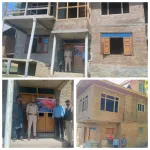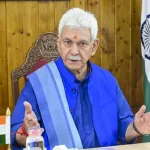‘Culture’ is an umbrella term which encompasses the social behaviour, institutions, and norms found in human societies, as well as the knowledge, beliefs, arts, laws, customs, capabilities, and habits of the individuals in these groups. Culture is often originated from or attributed to a specific region or location.
The Sustainable Development Goals or Global Goals are a collection of 17 interlinked objectives designed to serve as a “shared blueprint for peace and prosperity for people and the planet, now and into the future. According to UNESCO, there are four dimensions of sustainable development- Society, Environment, Culture and Economy, where Sustainable development was first described in 1987 as the “development that meets the needs of the present without compromising the ability of future generations to meet their own needs”. Based on this, sustainable development seeks to balance our needs with our society’s environmental, social, and economic limitations.
Culture is one of the pillars of sustainable development, and therefore, cultural aspects cannot be missing from any sustainable development strategy and Jammu and Kashmir has the distinction of having multifaceted, variegated and unique cultural blend, making it distinct from the rest of the country, not only from the different cultural forms and heritage but also from geographical, demographically, ethical, social entities, forming a distinct spectrum of diversity and diversions, making it vibrant specimens of Indian Unity amidst diversity. Its different cultural forms like art and architecture, fair and festivals, rites and rituals, seer and sagas, language and mountains, embedded in ageless period of history, speak volumes of unity and diversity with unparalleled cultural cohesion and cultural service.
It is rightly said by Robert Alan Arthur, “Cultural differences should not separate us from each other, but rather cultural diversity brings a collective strength that can benefit all of humanity.” Also, “Intercultural dialogue is the best guarantee of a more peaceful, just and sustainable world.” I believe that Inter-cultural dialogue entails the sharing of ideas and differences with the intent of developing a deeper understanding of different perspectives and practices. According to UNESCO, intercultural dialogue fosters social cohesion and helps to create an environment conducive to sustainable development. We all need to understand that ‘Culture’ is also an essential component of human development, representing a source of identity, innovation and creativity for all, it provides sustainable solutions to local and global challenges.
Now, the question is how does culture relate to sustainable development? Well, despite humans originating from a common ancestor, there are many differences between individuals or social groups. Since ancient times, humans have been moving from one place to another for various reasons such as avoiding danger, having access to resources, or finding a more suitable climate. Wherever people went, they formed communities and developed a common identity and distinct cultures.
Essentially, culture encompasses everything about daily life like manners, habits, dresses, language, religion, art, laws or morality. The world is a mosaic of cultures, and globalisation has made it more possible than ever to live in a multicultural setting rich in intercultural experiences. In addition, culture is a driver of sustainable development. The cultural sector promotes economic growth through cultural tourism, handicrafts production, creative industries, agriculture, food and medicine, and fisheries. Traditional agriculture and food preparation practices enhance food security.
From my point of view, Sustainable development occurs within cultural contexts. Therefore, culture must be integrated into sustainable development strategies. In addition culture is a driver of sustainable development. The inter-linkage between cultural and natural heritage is a foundation for environmental sustainability and biodiversity preservation. In Asian communities, culture is the foundation of well-being, inclusiveness and resilience.
Culture is a way of life; it includes cultural practices, norms and life-styles. It influences how people think and act. It is central to individual and collective identity and sense of belonging. It provides the social fabric that bonds communities and families and is imperative to social cohesion and sustainable livelihoods. As such, culture is necessary not only for the confidence, creativity and happiness of people and communities, but also for their survival.
Sustainable development takes place within cultural contexts. Culture can promote economic growth (cultural tourism, handicrafts, food etc.) and environmental sustainability (cultural and natural heritage preservation). For this reason, it is essential to preserve cultural identities across the world as they can accelerate the transition to a more sustainable future.
Historically, economic development, as measured by Gross domestic product (GDP), has been primary objective of national policy-making. However, global leaders are now challenged to shift the developmental paradigm and put the well-being of people at the centre of sustainable development. The United Nations General Assembly confirmed “that unsustainable patterns of production and consumption can impede sustainable development”, and recognized “the need for a more inclusive, equitable and balanced approach to economic growth that promotes sustainable development, poverty eradication, happiness and well-being of all people” in resolution. The global movement toward valuing the well-being, or happiness, of people is evident in numerous initiatives. Culture acts as both an enabler and driver of sustainable development.
Furthermore, in the Pacific Nations, the Pacific Ministers of Culture endorsed the Regional Culture Strategy: Investing in Pacific Cultures 2012-2020, and the Pacific Culture and Education Strategy (2010-2015). These documents, together with UNESCO’s normative instruments for culture, provide important guidelines for the development and preservation of culture and culture related industries in the Pacific at all levels. The Pacific Regional Culture Strategy highlights the economic opportunities of cultural industries in the Pacific, including in the sub-sectors of fashion, visual arts and MICE (Meetings, Incentives, Conventions and Events). Community-based customary practices and laws, government-supported programmes, policy and legislations work to mutually reinforce the goal of sustainable development for the betterment of Pacific people. Additionally working within cultural systems is a necessary part of gaining community involvement and support. For example, in the case of climate change mitigation and disaster risk reduction strategies local communities and partners must work together to identify a vision that is respectful of the current culture. Additionally traditional and local knowledge can add tremendous value in risk identification and reducing vulnerability. Traditional knowledge also contains a wealth of information related to marine and terrestrial biodiversity in the Pacific.
Therefore, Culture and Inter – culture communication has to be the continuing potential to provide healthy, inclusive, sustainable livelihoods in the Cross Nations. This needs to be recognised and well-reflected in policies and investments that support protect and promote those aspects of Pacific cultures that make a positive contribution to the realization of these and other sustainable development goals. Cultural sustainability, described as the ability to retain or improve values and attitudes in the face of external forces, specifically, is a facilitator and driver of sustainable development and plays a critical role in sustainable development programmes, where the Governments need to adopt a community-centred approach in all their developmental efforts to achieve this.
(Author is senior journalist, an intl. educationist, counsellor, capacity building, research & development expert, motivational speaker & a social reformer)





